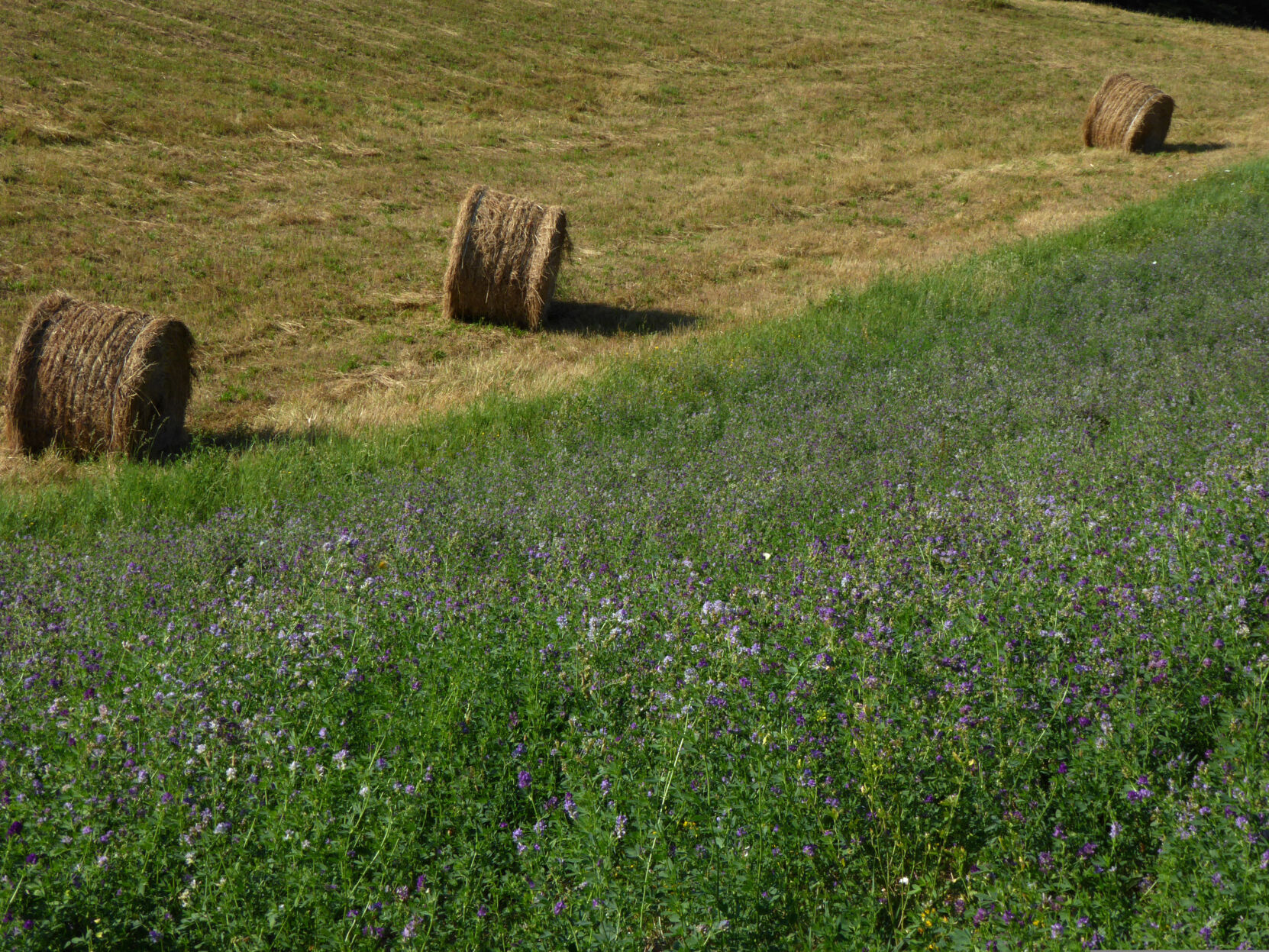High-risk, high-reward alfalfa requires gambler’s nerves

If agriculture is a casino, alfalfa is the high-stakes table: high risk but potentially high reward, but only if a lot of things go right.
“There’s hardly a crop out there more profitable than alfalfa,” said Jeffrey Jackson, who can be seen in YouTube videos as the “Forage FanAddict.” “If you have high-quality alfalfa, you will never have any trouble selling it for a premium price. It just flies off the shelves.”
Between June and October of last year, average alfalfa prices moved from $211 per ton to $281 per ton, “obliterating” the previous record to $227 per ton, according to U.S. Department of Agriculture figures. Some Supreme and Premium hay was selling for more than $400 per ton for much of the year, according to Hay and Forage magazine.
Besides dairies, the main markets for high-quality alfalfa are beef growers, with other livestock like goats and sheep making up a smaller market.
Alfalfa is a perennial crop, which means once a stand is established, it keeps producing and growing a root network, perhaps for four or five years. A good stand with the right soil condition can produce up to nine harvests a year in some locations.
And water. Lots and lots of water. “Moisture will determine” the quality of an alfalfa crop, said Jackson. The drought, which has lasted several years in some parts of the West, is the main reason why total alfalfa acres have declined between 30% and 40% since 2020. Without enough irrigation, alfalfa too much of a risk for some farmers. In 2022, forecasted alfalfa production stood at 488 million tons—down 1% from 2021.
Alfalfa is not only a thirsty crop, it’s hungry as well. It does not need nitrogen fertilizers; the main nutrients it needs are potassium (potash), phosphorus, boron and sulfur, said Jackson. Transportation costs and supply chain issues can make these nutrients expensive or hard to get, or both.
In addition, alfalfa’s extra productivity requires extra work—a lot of it. If you’re getting those nine crops a year, it means you and your equipment could be working nine times harder and longer than with other crops.
It depends on what part of the country you’re in, though, he said. Where Jackson farms, along the Interstate Highway 29 corridor running north from Kansas City to Canada, alfalfa acres have expanded, he said.
Achieving that top-quality crop can be tricky. Although premium alfalfa can consistently get top prices, a lower-quality crop is subject to more demand and price swings. Jackson thinks most alfalfa price fluctuation happens with the middle-range-quality alfalfa crops.
Weed pressure can be an issue in the first year, said Jackson, but once a stand is established, weeds aren’t usually a big issue. But alfalfa weevils are. A primary alfalfa pest, alfalfa weevils are now present in all 48 states after having been introduced from Asia in 1904. Other pests that can affect alfalfa include blue and spotted aphids, blister beetles, webworms and army cutworms.
The end of chlorpyrifos, previously one of the most effective tools against the alfalfa weevil, presents a real challenge to alfalfa growers.
Although alfalfa is both hungry and thirsty, it brings benefits to the soil. Being a legume, it fixes nitrogen, which means it sequesters carbon. Its extensive root network contributes to long-term soil health, so a cost-benefit analysis of alfalfa may not be a simple matter.
Early last year, some ag publication recommended turning over thinly yielding alfalfa stands to get the nitrogen benefits in the soil for rotational wheat and corn.
The high roller tables aren’t for everyone, but the rewards can be great for the winners.
—David Murray can be reached at [email protected].



